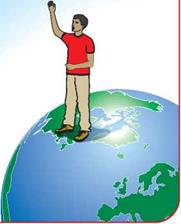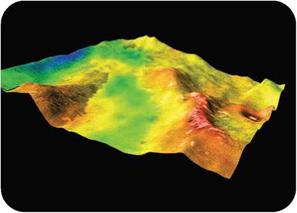Radar’s Many Uses
Many home security systems have motion detectors that sense when someone is moving around in a room. Some of these detectors work by picking up the heat of the person’s body, but others use radar. They flood the room with microwaves that bounce back to the detector. If someone enters the room, the steady pattern of reflections is disturbed, and an alarm sounds.
Some of the cameras used to monitor the speed of vehicles on highways work by radar. The radar system measures the speed of the vehicles. If a vehicle is moving faster than the speed limit, the radar system triggers a camera that photographs the car, including its license plate, so it can be traced to the speeding owner.
Archaeologists use a variety of methods to map structures underground and ground-penetrating radar is one of these methods. Radar can probe down to 33 feet (10 meters) deep and show buried features of ancient buildings such as walls and floors.
|
HOW SPACE PROBES MAKE MAPS |
|
Space probes use radar to make maps of planets. As they orbit the planet, they fire radar pulses at the planet’s surface. This measures the distance between the spacecraft and the planet and thereby builds up a map of its surface shapes. The bigger a radar antenna is, the more detailed a map it can make, but spacecraft can only be fitted with small antennae. Clever signal processing enables these small antennae to work as if they are much bigger. A number of radar reflections are put together in a series as if they had come from one big antenna instead of a small antenna moving along. This is called synthetic aperture radar (SAR). The Magellan space probe mapped Venus using SAR. Remote sensing satellites in Earth orbit also use SAR to produce detailed images of our planet. |
|
О A SAR image shows lowlands, ridges, hills, and (right) an impact crater on the surface of Venus. |
|
— SEE ALSO: • Air Traffic Control • Communication • Space Race • World War II |
|
Л |
![]()
![]()
![]()












